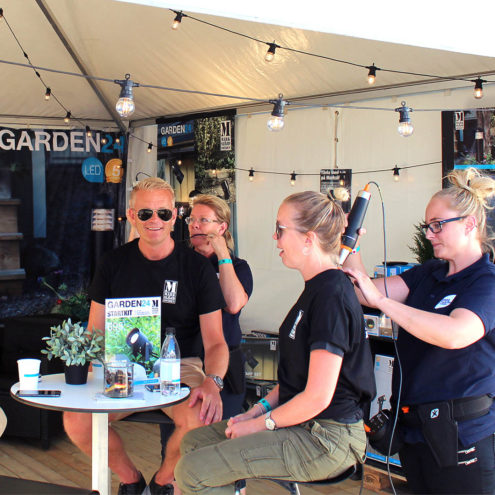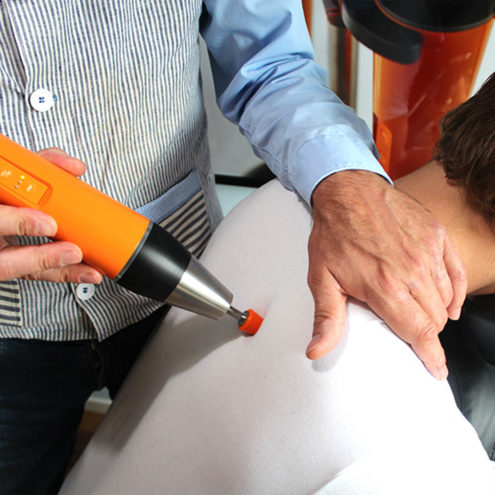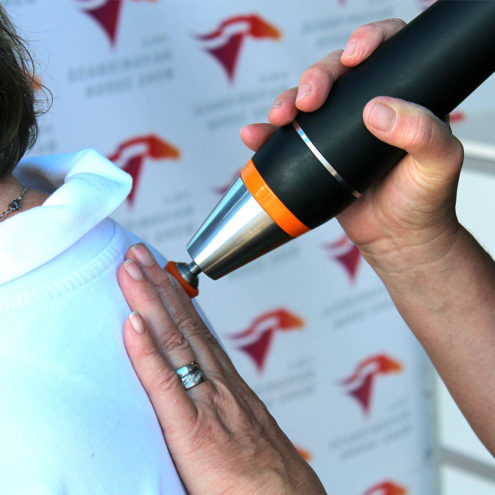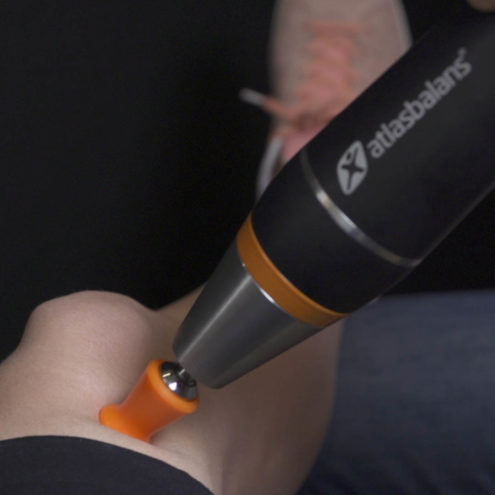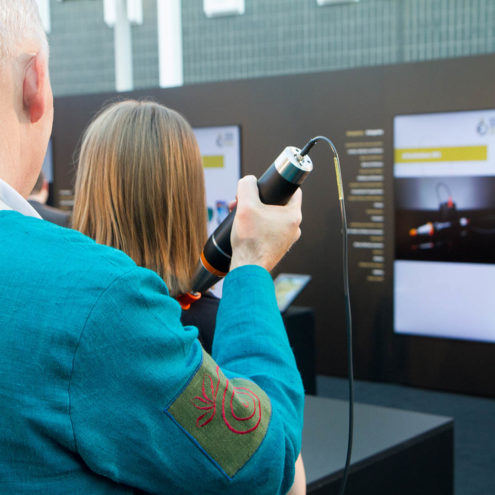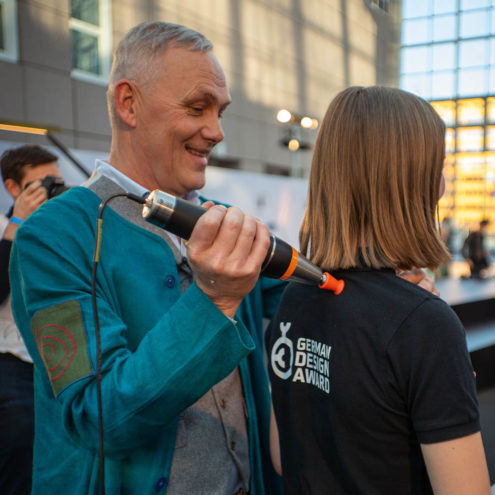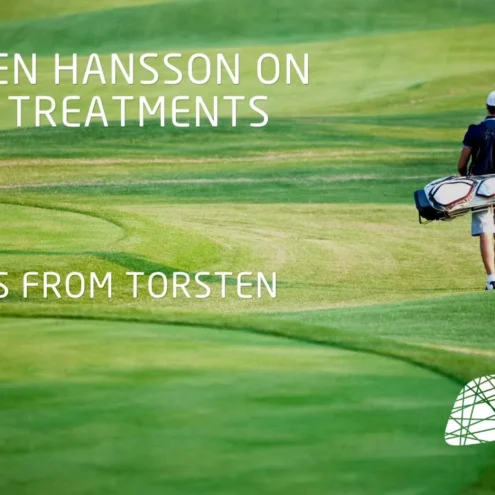Heel spur treatment
On the bottom of the foot there is a strong fascia structure called the plantar fascia. It extends from the bottom of the heel bone, under the arch and attaches under each toe bone. The plantar fascia provides shock absorption and stability to the foot. An incorrect load on the foot puts too much stress on the attachment of the plantar fascia to the heel which, after a period of constant repetition, can cause small injuries that cause inflammation and pain in the tendon attachment. To cope with the increased load, the tissue tries to strengthen itself by storing more bone tissue and a small bone spur forms in the tendon attachment under the heel.
The problem is therefore the non-optimal load on the foot, which may be due to an unbalanced pelvis that causes joints and soft tissues to be loaded incorrectly and unevenly. Treatment at a Fascia Clinic is aimed at getting the body more balanced so that the load on the foot works more optimally and the tendon attachment is relieved before major damage occurs, and preferably preventively.
What causes heel spurs?
What is called a heel spur is usually not a true developed heel spur but starts with an inflammation of the plantar fascia tendon attachment to the underside of the heel bone, plantar fasciitis. Constant, daily repetitive overuse of the tendon causes small micro-injuries that the body tries to heal. This causes pain when you put weight on the heel but is not yet a real heel spur. If you ignore the pain and continue to put weight on your foot in the same way, a heel spur will develop over time. It develops to adapt the tissue to the heavy load in an attempt to strengthen the structures around the heel bone attachment. It does this by building up more bone tissue. A small ossification will then form, which will be like a small bony bump on the heel bone.
Why do you get heel spurs?
The overloading of the tendon attachment described above may be caused by the body being out of balance and joints and feet thus being misaligned. It may also be that you have been running and moving on hard, dull surfaces and have not been trained for it. Similarly, you may have worn the wrong shoes with poor shock absorption, which means that the foot cannot work optimally. When the incorrect movement pattern is repeated often, or even daily, over a long period of time, injuries occur.
The pelvis may be tilted or rotated, which spreads imbalance both up the spine and down the knees and feet. Muscles and fascia do not work optimally as some chains have too much tension and others are too weak. In the case of heel spurs, tension can be felt upwards in the calf, knee, thigh and up into the pelvic muscles and fascia.
What are the symptoms of heel spurs?
The typical symptom of heel spurs or plantar fasciitis is pain under the heel when you start to put weight on it after resting, like in the morning when you get up.
Heel spurs when pregnant
During pregnancy, the stress on joints and feet increases. It is therefore particularly important to ensure that the body is kept straight and in balance so as not to overload certain joints. It is very important from several aspects, to keep and correct the pelvis. An oblique, rotated pelvis affects not only the mother’s body load and balance, but also the growing fetus and the birth itself.
When and where should I seek treatment for heel spurs?
If you feel pain under your heel when you get out of bed in the morning, contact a Fascia Clinic as soon as possible. They will help you analyze your posture and treat you accordingly. You can then eliminate a major cause of heel spurs developing. Seeking help early will save you both time and money, and most importantly, you won’t have to walk around in long-term pain that builds up new problems.
How is heel spur treatment done?
A fascia clinic starts with an analysis of posture and body balance. The fascia therapist has a holistic view of the body that is often lacking in traditional care. Treatment is carried out using manual osteopathic techniques and a vibrating machine that relaxes the tissue.
Heel spur – What can I do myself?
Check your shoes and make sure they are fit for purpose. As soon as you feel pain, contact a FasciaClinic to review your posture and loading and, if necessary, have it corrected.
Go barefoot a lot to give your feet a good, natural workout.
Heel spur exercises
Try to go barefoot as much as you can, both inside and outside. It strengthens the muscles and fascia of your feet.
Do lots of foot exercises, tapping your toes to pick things up off the floor. Stand with the front of your foot on a step and gently weigh down your heel.
Frequently asked questions and answers about heel spurs
What is heel spur?
A heel spur is an overload on the tendon/fascia under the arch of the foot that attaches to the heel bone. To strengthen the tissue and cope with the increased load, the body builds up more bone tissue and a small ‘spur’ forms.
How do you cure heel spurs?
Seek help from a FasciaClinic as soon as you start to feel pain under your heel when you get up in the morning. Prevent by getting regular check-ups and body balancing.
How do you treat heel spurs?
By releasing tension in the calf and up towards the pelvis. Correct so that the pelvis is in balance, straight.
Where is the heel spur located?
In the calf muscles, knees and pelvis.
Where does it hurt when you have a heel spur?
Under the front part of the heel.
 Search
Search






